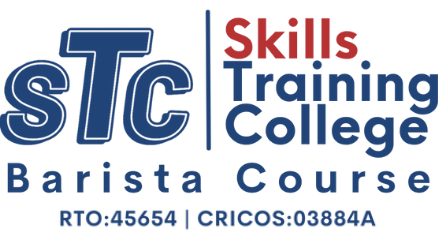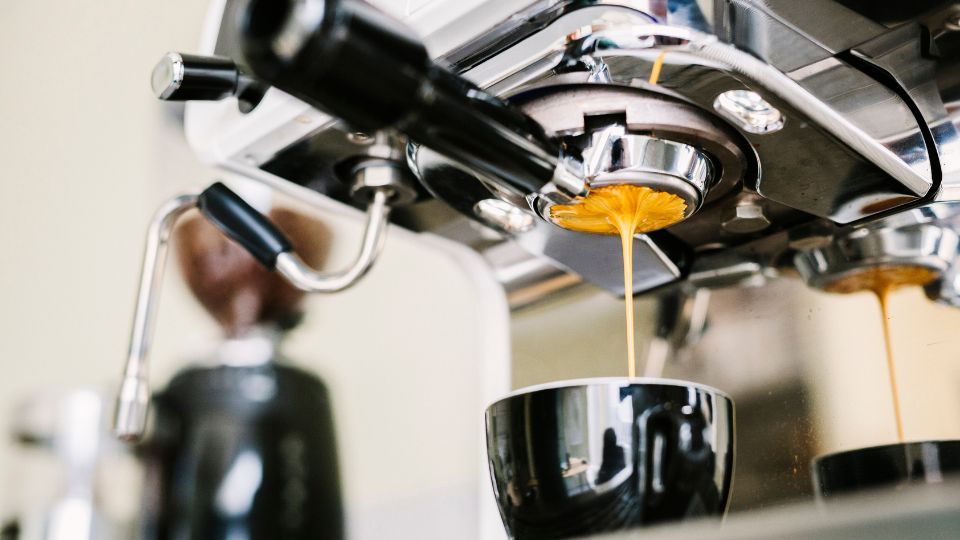When it comes to coffee, there are a variety of ways to enjoy it. However, for true coffee lovers, there is nothing like a great espresso. This small but mighty beverage packs a punch in terms of flavour and caffeine content, making it a go-to for many coffee enthusiasts. A great espresso is all about the quality of the beans, the grind, the machine, and personal preference.
However, it’s not always simple to make perfectly consistent shots of espresso. There are a few potential causes for uneven espresso extraction:
- Uneven coffee distribution,
- Tamping that isn’t even,
- Using the wrong size grind, or
- Technical issues with your coffee machine.
It’s important to note that pulling shots takes time and practice. In order to produce uniform espresso shots, it is crucial to use high-quality coffee beans, the proper brewing equipment, and a consistent brewing procedure.
What Does Ground Coffee Have To Do With Delicious Espresso?
Delicious espresso relies heavily on ground coffee, which is why it is a staple ingredient. A fine grind is required for a rich, delicious shot of espresso. When coffee beans are ground finely, more surface area comes into contact with the hot water, ensuring that all excellent oils and tastes are extracted. Also, the finer the grind, the slower the water will move through the coffee.
This means the coffee will be extracted more thoroughly, giving it a stronger and more complex flavour. The flavour and aroma of the finished espresso will depend on the freshness and quality of the ground coffee used.

Espresso Machine For Best Espresso Shots
The following should be taken into account when selecting a coffee machine for producing high-quality shots:
- Cost estimate: Figure out how much you are willing to spend on a coffee machine, and look for models in that price range.
- Type of machine: Choose the right machine by thinking about your skill level and the degree of freedom you want to give the machine.
- Type of boiler: Choose a machine with a high-quality brass or stainless steel boiler for uniform heat distribution and safety.
- Pressure: Select a device capable of producing espresso at the recommended pressure of 9 bars.
- Brew group: Consistent extraction can be achieved using a brew group made of brass or chrome, so look for a machine with one of these materials.
- Size and capacity: Consider the machine’s size and capacity based on your desired available space and serving size.
- The reputation of the brand: Choose a well-known brand with helpful customer service and high ratings from satisfied customers.
- Features: Look for extras like programmable settings, a milk frother, and a cup warmer to make the most of your coffee machine.
How Does Moisture Affect Espresso Pulling?
Increased moisture levels might lead to irregular extraction and lower-quality espresso. Store coffee beans in a dry, airtight container to maintain an appropriate moisture level and prevent exposure to moisture. Here is a summary of how moisture affects espresso pulling:
| Moisture Level | Impact on Espresso Pull |
| Too Moist | It can cause uneven extraction and result in over-extracted or under-extracted espresso |
| Optimal Level | Results in consistent and balanced espresso extraction |
| Too Dry | This can result in a weak, under-extracted espresso |
What Are Three Ways To Enhance Espresso Shot Consistency?
The key to a great shot of espresso is in the weighing, grinding, and tamping. Below is a concise description of each step:
- Weighing: Espresso requires exact measurements; thus, the coffee beans must be weighed. The normal amount is 7 grams for each shot, which might vary depending on personal preference.
- Grinding: Once the coffee beans have been weighed, the next step is to grind them. For a great shot of espresso, the grind size is critical. The grind should be fine, similar to that of table salt. A competent grinder is required to provide a uniform and equal grind.
- Tamping: Tamping is compressing ground coffee in the portafilter into a compact puck. The goal is to make a smooth surface for the water to flow through. Apply roughly 30 pounds of pressure on the coffee. Employ a tamper that fits your portafilter basket and apply uniform pressure.
How Many Espresso Shots From 1Kg Of Beans?
The number of shots made from 1kg of coffee beans is determined by several factors, including the type of beans, the roast level, the size of the shots, and the brewing method. A single shot of espresso typically calls for seven grams of beans. This calculation method shows that a kilogramme of roasted coffee beans should yield around 142 shots.
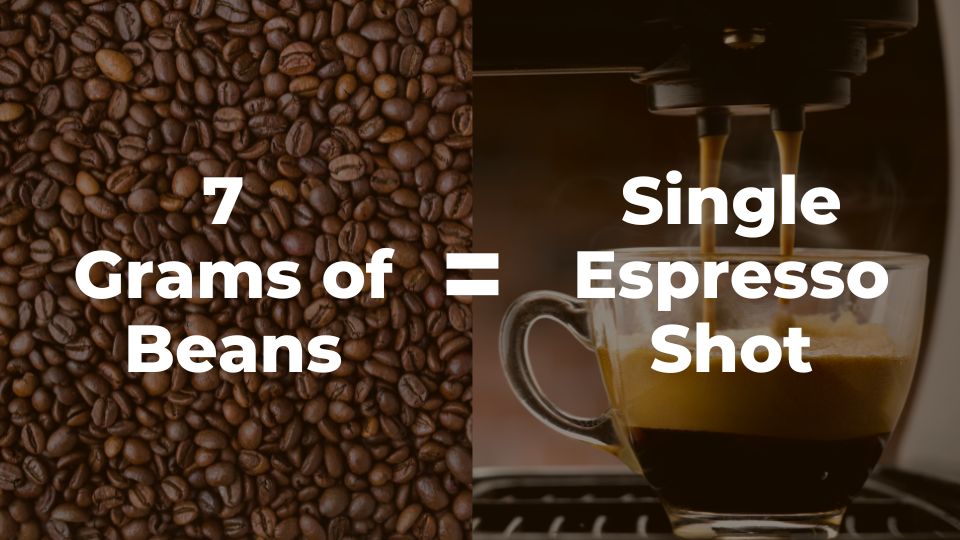
How Long Should Espresso Shots Run?
The ideal time for a shot to run is typically between 20-30 seconds, from when the water comes into contact with the coffee grounds until the extraction is complete. This time frame allows for the best extraction of the coffee’s flavour compounds, resulting in a well-balanced and flavorful shot.
However, the exact time will vary depending on the type of beans, grind size, and brewing method. The grind size and other variables must be adjusted to achieve the desired shot time and flavour profile.
What Is A 2 Shots Espresso?
2 shots of espresso typically refer to two servings of concentrated coffee extracted from a coffee machine. Each shot is created by forcing hot water through finely-ground coffee beans under high pressure, yielding a small amount of highly concentrated coffee with a thick crema layer.
A standard shot of espresso is typically around 1 fluid ounce but can vary based on the size of the shot glass used. 2 shots can be consumed on their own or as the foundation for various espresso-based beverages, such as lattes, cappuccinos, and macchiatos.
How Many Shots In Espresso?
Espresso is typically made by passing 1-2 ounces (30-60 milliliters) of hot water through 7-9 grams of finely ground coffee beans, yielding a single or double shot. However, the number of shots in an espresso can differ based on personal choice and the size of the portafilter on the coffee machine.
Why Does My Espresso Shot Pulls Too Fast?
There could be several reasons why your espresso shot is pulling too fast:
- Grind size: The shot will be too quick if the coffee grounds are ground too coarsely and the water is forced through them. Try using a finer setting on the grinder.
- Tamping pressure: If the coffee is not tamped with enough pressure, the water will flow too quickly through the grounds. To slow down the shot, try increasing the tamping pressure.
- Water temperature: Too hot water can cause the shot to extract too quickly. Ensure the water temperature is between 195 and 205 degrees Fahrenheit (90 and 96 degrees Celsius).
- Amount of coffee: If you use too little coffee in the portafilter, the shot will extract too quickly. Increase the amount of coffee you use.
You should be able to slow down the shot and achieve a better extraction by adjusting these factors.

What Is The Double Shot Espresso Pour Time?
The pouring time for a double shot espresso should be between 25 and 35 seconds. This time frame allows for good flavour and aroma extraction from the coffee beans while maintaining a balanced taste.
However, the ideal pour time will differ depending on the coffee machine, the type and roast level of the coffee beans, the grind size, and the ambient temperature and humidity. Experienced baristas will frequently adjust the grind size, tamping pressure, and other variables to achieve the desired pour time and flavour profile for each shot of espresso.
Why Is My Espresso Machine Not Pulling Shots?
There are several possible reasons why an espresso machine isn’t pulling shots. Here are a few possible causes to investigate:
- Water supply: Ensure the machine’s water reservoir or line is full of clean water and properly connected to the water source. Inadequate water pressure or a clogged water line can also impair the machine’s ability to pull shots.
- Coffee grind: If the coffee grind is too coarse or too fine, the extraction process will be hampered, and the machine will not pull shots. Adjust the grind size to see if it makes a difference.
- Tamping pressure: Proper tamping pressure ensures water flows evenly through the coffee. If the coffee is not properly tamped, it can result in uneven or no extraction.
- Portafilter and group head: The portafilter and group head can become clogged with old coffee grounds and oils, obstructing water flow and affecting extraction. Regular cleaning of these components is necessary to keep the machine running smoothly.
- Machine maintenance: Regular maintenance is required to keep the machine in good working order. For recommended maintenance procedures, such as descaling or replacing parts, consult the machine’s manual.
What Can Cause An Inconsistent Flow Rate?
There are several potential causes for an irregular flow rate during espresso extraction, such as:
- Uneven tamping: Uneven tamping can lead to channels or gaps in the puck, leading to an inconsistent flow rate.
- Grind size: Variability in the coffee beans’ grind size might affect the extraction rate. If the grind is too fine, the flow will be slowed, whereas if it is too coarse, the flow will be sped up.
- Water pressure: Inconsistent flow rates can be caused by either too little or too much water pressure. The flow may slow to a stop if the pressure is too low. The rate of flow can be increased if the pressure is made to be too great.
- Holes in the portafilter basket: If they are not uniformly spaced or are clogged, the flow rate will be erratic.
- Group head seal: Water leakage around the portafilter can occur if the group head seal is worn or cracked, resulting in a fluctuating flow rate.
What Are Channeling And Extraction?
Channeling and extraction are both significant factors that have the potential to influence the flavour and quality of the espresso significantly. Here is a summary of what channeling and extraction are and how they affect espresso:
| Concept | Definition | Causes | Effects On Espresso |
| Channeling | Formation Of channel or path of least resistance in the coffee puck during extraction | Uneven distribution of coffee grounds, inconsistent tamping, or other factors | Uneven extraction, poor taste, sour or bitter espresso |
| Extraction | Dissolving of soluble compounds in coffee beans with hot water during espresso brewing | Water temperature, pressure, grind size, and brew time | Even extraction, balanced and flavorful espresso shot |
How To Fix Channeling Caused By Poor Coffee Distribution?
Channeling caused by improper coffee distribution can be corrected by modifying your coffee distribution technique. Here are a few simple tips for addressing channeling caused by inadequate coffee distribution:
- Begin with freshly roasted coffee beans, which should be ground before brewing.
- Tap the portafilter on a mat or gently shake it to distribute the coffee grinds evenly.
- To guarantee a uniform distribution of coffee grounds in the portafilter, use a distribution instrument such as a leveler.
- To ensure a smooth surface, tamp the coffee grinds uniformly and firmly with consistent pressure.
- Brew your espresso shot while monitoring the extraction time and volume to ensure consistency.
- If channeling persists, change your distribution strategy to distribute the coffee grinds more evenly.
- Continue until the extraction is even and consistent.
- Mastering your coffee distribution method may take some time. Still, with constant work, you can enhance the quality of your shots and avoid channeling caused by improper coffee distribution.
Why Is My Espresso Watery?
Your espresso may not have been properly extracted if it is watery; this means that not enough soluble components have been drawn out of the beans. A coarse grind, inadequate coffee grounds, a low brewing temperature, or a low brewing pressure can all contribute to this.
What Is The Significance Of Coffee Dose In Producing The Perfect Espresso Shot?
The coffee dose, which refers to the quantity of ground coffee required to produce an espresso shot, is one of the most important factors to consider when crafting the ideal espresso shot. It impacts the espresso’s extraction time, flavour, and overall quality.
A decent dosage of coffee per shot is normally approximately 7-9 grams, and altering the dose can assist in fine-tuning the shot to the desired taste and consistency. Too little coffee produces a weak and watery shot, while too much coffee produces a bitter and over-extracted shot.
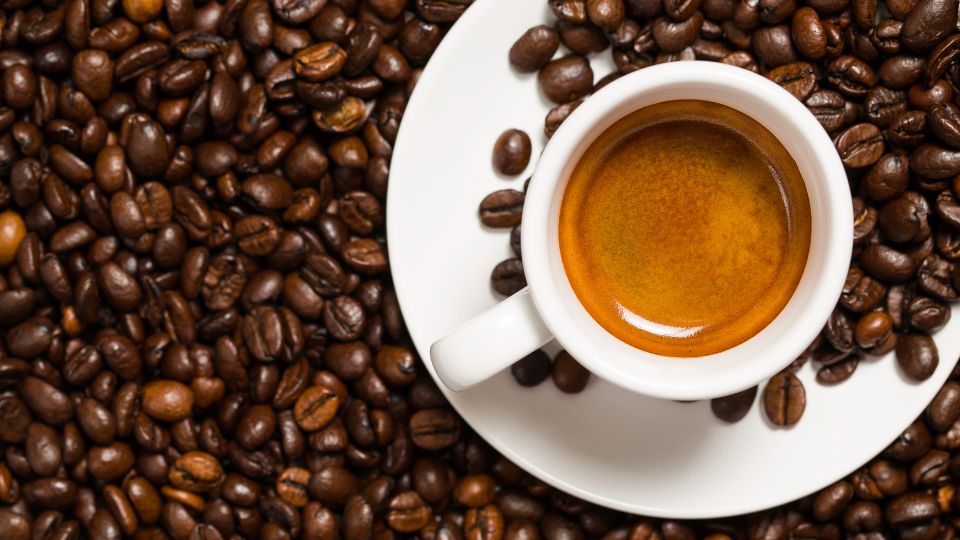
Why Is My Espresso Only Coming Out Of One Side?
There are several possibilities for why your espresso is pouring out of one side of the portafilter. The following are some factors that should be checked:
- Unevenly packed coffee: If you don’t pack the coffee grinds equally in the portafilter, the water may find an easier path through one side, resulting in uneven espresso. Ensure the grounds are evenly distributed and tamped down with consistent pressure.
- Blocked basket holes: Examine the openings in the portafilter basket to check if any are clogged with coffee grounds or debris. If so, use a paper clip or toothpick to remove them.
- Worn-out gasket: The gasket on the group head of your coffee machine may be worn out or broken, resulting in an uneven flow of water. Examine the gasket and, if necessary, replace it.
- Dirty shower screen: The shower screen above the coffee grounds may be clogged with coffee oils and debris, causing the water to flow unevenly. Remove the screen and properly clean it.
- Uneven tamper pressure: If you don’t tamp the coffee with even pressure, the water will run unevenly through the portafilter. Make sure to use consistent pressure and technique when tamping.
By checking these probable difficulties, you can troubleshoot the problem and get your espresso flowing evenly again.
Making A Great Single Espresso Takeaway
To prepare a wonderful single espresso takeaway, start with fresh, high-quality coffee beans, grind them coarsely, and fill the portafilter basket evenly. Warm the machine and cup, brew the espresso for 20-25 seconds at 200°F and 9 bars of pressure, and watch the golden crema flow out. Adjust the grind and amount of coffee as needed, and serve immediately in a tiny cup with a cover that has been preheated.
How Do You Make A Perfect Double Espresso Shot?
Creating a perfect double espresso shot demands paying close attention to various aspects, including coffee bean quality, grind size, water temperature and pressure, and brewing time. Here are the actions to take:
- Get started with roasted coffee beans that are both fresh and of high quality. They should be freshly roasted and ground immediately before use.
- Grind the beans until they are finely ground. You’ll need 14-18 grams of coffee for a double shot.
- Fill the portafilter basket uniformly with ground coffee, ensuring level distribution and consistent tamping pressure.
- Warm up the coffee machine and the cups. This will aid in the preservation of the espresso’s warmth and quality.
- Begin the brewing procedure. The temperature of the water should be around 200°F, and the pressure should be around 9 bar. A double shot should be brewed for about 25-30 seconds.
- Keep an eye on the espresso as it pours from the portafilter. It should be a steady, thick stream with a layer of golden crema.
- Adjust the grind size and amount of coffee if the espresso is weak or too robust.
- After the espresso shot is finished, serve it immediately in prepared cups.
How To Avoid Uneven Espresso Extraction?
Inconsistent tamping, grinding, or dispersion of the coffee grounds in the portafilter can all lead to espresso with an uneven flavour. To avoid uneven espresso extraction, here are some tips:
- Ensure you’re grinding freshly roasted beans before you pour yourself a cup of coffee.
- Make sure that the coffee grounds in the portafilter are spread out evenly.
- Before you tamp, use a leveler or other tool to spread the coffee grounds out evenly.
- Use a steady, firm tamp to pack the coffee grounds down evenly.
- Make sure the temperature and pressure settings on your coffee machine are right.
- Check the extraction time and volume to ensure they are always the same, and make changes as needed.
- Clean and maintain your coffee machine and its parts regularly to avoid buildup or damage that could affect the extraction.
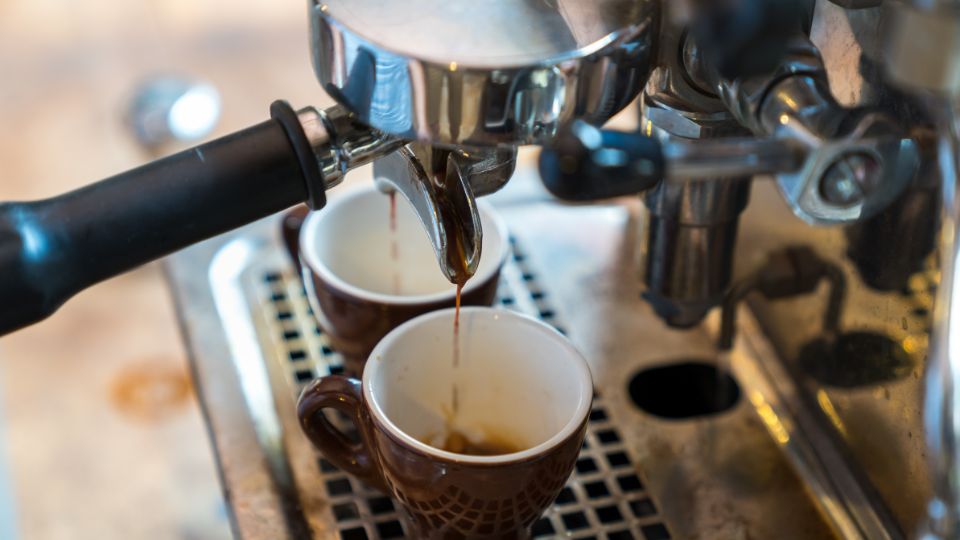
How To Avoid Under Extraction?
To avoid under-extraction when brewing espresso, ensure the grind size is consistent, the amount of coffee grounds is correct, and the water temperature and pressure are correct. Warm the equipment and cups to guarantee a full extraction, and pay attention to the brewing duration.
How To Confirm Your Brew Temperature?
You can use a thermometer to measure the temperature of the water as it comes out of the espresso machine to validate your brew temperature. Let the water run for a few seconds before measuring to get an accurate reading. The recommended brew temperature for espresso is roughly 200°F, with a +/- 2°F range.
What Effect Does Wet Tamping Have On Pull’n Shots Coffee?
Wet tamping can drastically improve the taste of a freshly brewed cup of coffee. Wet tamping involves softly wetting the coffee grinds before tamping them into the portafilter. This can aid in forming a more even and compact puck of coffee, resulting in a more consistent extraction and better flavour in the espresso.
How To Avoid Side Tamping?
You should never tamp your espresso from the side if you want consistent results. This can be done with a distribution tool or by gently tapping the portafilter. Use even pressure when tamping, and keep the tamper perpendicular to the portafilter. Finally, make sure the coffee puck is uniform in size and shape before pulling the shot.
How To Use The Right Tamper?
Choose a tamper that fits your portafilter to make espresso with the right tamper. The tamper’s base should fit inside the portafilter’s basket. While tamping, hold the tamper perpendicular to the portafilter and apply even pressure. The tamper should be easy to hold and always give the same tamping experience. If you want the best results, try a few tampers until you find one you like.

What Is a Self-Leveling Tamper?
A self-leveling tamper is a tamper that automatically levels the coffee grounds in the portafilter basket. The following are some essential facts about self-leveling tampers:
- The spring-loaded mechanism of the tamper adjusts to the shape and size of the coffee puck, ensuring that the tamp is level every time.
- Self-leveling tampers are intended to provide consistent tamp pressure, aiding in the quality and consistency of espresso shots.
- These tampers can help baristas new to tamping or who want to speed up their workflow.
- Self-leveling tampers are usually more expensive than traditional tampers. Some baristas prefer the tactile feedback provided by manually tamping their coffee.
- Some self-leveling tampers are adjustable, allowing you to tailor the amount of pressure and tamp depth to your preferences.
What Is Filter Basket
A filter basket (portafilter basket) in espresso coffee refers to the small metal basket that holds ground coffee in a coffee machine. It sits inside the portafilter, the handle holding the basket.
The filter basket is an important part of the espresso-making process as it distributes the ground coffee evenly and allows water to pass through it to extract the espresso. Filter baskets for coffee machines come in various styles, including single and double-shot baskets and baskets with varying hole sizes to control the water flow rate through the coffee.
How To Change The Portafilter Basket?
Changing the portafilter basket involves the following steps:
|
Steps |
Description |
| Remove the old basket | First, ensure the portafilter is empty, and the machine is turned off before removing the old basket. Then, holding the portafilter handle firmly, gently pry the old basket out of the portafilter with a flathead screwdriver or the edge of a spoon. Take care not to scratch the basket or the portafilter. |
| Clean the portafilter | Clean the portafilter with a damp cloth or a brush to remove debris or old coffee grounds. |
| Insert the new basket | Take the new basket and ensure it’s the right size and shape for your portafilter. Insert the basket into the portafilter, ensuring it is properly and snugly seated. |
| Examine the fit | Gently shake the portafilter to ensure the basket is secure and will not fall out during use. |
| Test the new basket | After installing the new basket, turn on the machine and run a test shot of espresso to ensure that the new basket is working properly and producing the desired flavour and consistency. |
Remember to clean the portafilter and basket regularly to ensure the quality of your espresso and the longevity of your equipment.
How To Inspect The Coffee Puck?
After tamping, inspecting the coffee puck is an important step in making espresso. The procedure is as follows:
- Remove the portafilter from the coffee machine after tamping and inspect the coffee puck.
- The coffee puck’s surface should be level and even, with no visible indentations or coffee grounds clumps.
- Examine the puck’s edges for gaps or areas where the coffee is unevenly distributed.
- Gently press your fingers against the coffee puck. It should be firm and shapely but not too hard or soft.
- Look for signs of channeling, which occurs when water flows unevenly through the coffee puck, leaving visible channels. This could be due to uneven tamping or an uneven distribution of coffee grounds in the portafilter.
- Adjust your tamping or distribution technique and try again until you achieve a level, evenly packed coffee puck.
What Does Soupy Espresso Puck Mean?
The wet coffee grounds left in the portafilter after brewing an espresso shot are called a soupy espresso puck. The following are some considerations to take into account:
- The compacted bed of coffee grounds in the portafilter basket is known as a puck.
- After pulling an espresso shot, the puck should be dry and firm, indicating that the coffee was properly extracted.
- If the espresso puck is soupy or wet, this could indicate a problem with the brewing process, such as under-extraction, channeling, or incorrect tamping.
- A soupy puck can ruin the flavour of the espresso and make cleaning the portafilter difficult.
- To avoid a soupy puck, use the proper amount of coffee, grind size, and tamping pressure. Preheat the portafilter and coffee machine.
Conclusion
Nothing depresses a coffee connoisseur more than badly extracted shots. Several causes can contribute to this phenomenon, including insufficient tamping of the grounds or the use of improper grind size.
You can, however, discover what’s wrong and rectify it with the help of an accredited barista training provider. You can make your espresso consistently great by fine-tuning the grind size, polishing your tamping technique, and resolving any other issues.
